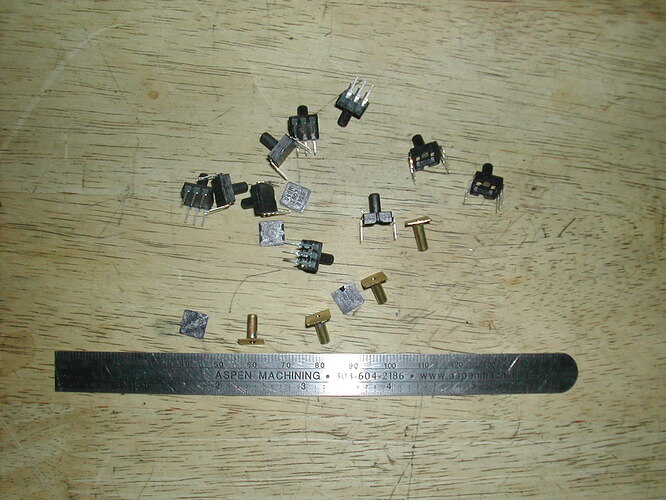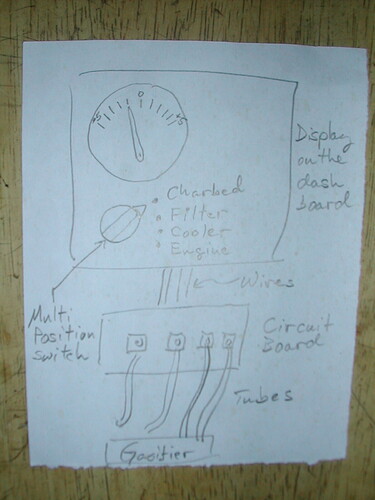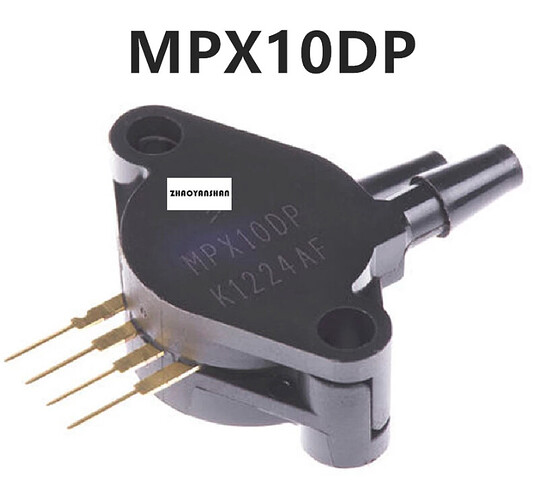Could any tell what the difference between regular hg vacuem gauges and the more exspensive H20 vac gauges.THANKS too DOW and all the wood gas builders.
Hg is inches of mercury which is much heavier the water. So the gauge is not sensitive enough for woodgas purposes.
Thanks for the gauge design sensetivy difference. Wonder what might use them h20 gauges in a salvage yard find.
Hey Guys,
Like, I get that we don’t like electrons around here. But I think it is getting ridiculous.
I got 10 of these bugs on aliexpress for $10.19, tax and shipping included. I have pried the backs off of 4 of them an have made little brass nozzles that will allow me to measure vacuum pressures and pressure differentials.
Rindert

OOTDTY MPS20N0040D-D Sphygmomanometer Pressure Sensor 0-40kPa DIP-6 For Arduino Raspb
Cool idea thanks for this reply, Too Ringert. what is the proceedure too make these work, looks like you are useing the two center wires with the hose conection.Then what ?? Thanks
Kevin,
I have had this in my list of favorite for some time, but have not needed to get one. Perhaps it will be of interest:
That gauge looks closer too my price range/ are original gauge find was 19.99 and said h20 on the dial area. maybe wc means the same as h20. ? THANKS
Yes, wc means water column.
Rindert
Hi Kevin,
Here is the data sheet. The picture shows a surface mount version (-s) but connections will be the same. I’ll put together a wiring diagram when I can get to it. I suppose for now this is just an idea.
Rindert
Hi Kevin,
I started another topic with how i measure vacuum, poor peoples version, DIY build.
You might like it or give it a try
I have tested the MPX10DP sensor purchased from aliexpress. The MPX10DP allows you to measure the difference at two points.
Look up manometers. They are dead simple to make, no electricity required. I have a configuration in mind myself - it would tolerate lots of evaporation and allows easy reading of multiple vacuum points:
Basically it’s a ~1 gallon reservoir partially filled with water and mostly sealed off from air (leave a small weep hole). The reservoir needs a clear window on one side so the water level can be viewed.
Then connect clear plastic tubes to the bottom of the reservoir (so the water flows into them). Simple 3/16 in aquarium lines will work perfectly fine and the needed water tight connectors are easy to source. Bring the clear tubes back up in front of the reservoir’s viewing window so that the relative water levels can be checked against each other. At this point the water line in each tube will be the same, but connect the free end of the clear tube to a pressure difference and the water level will be pulled up or pushed down relative to the reservoir. For gasifiers you want negative pressure everywhere so the reservoir will be the low base line and vacuum on the sense lines will pull the water in them up (pushed down is bad!).
Be sure the clear tubes rise well above the reservoir before heading off to whatever pressure you are trying to sense. This should be obvious, but if the tube doesn’t have that elevation along it’s path the water will just run out.
You can make some upgrades with styrofoam beads or a layer of mineral oil for evaporation control but not really needed. The reason to have the reservoir big is so evaporation is small relative to volume of water. That keeps the reservoir level relatively constant, but some “topping up” will be needed from time to time.
If you are sensing pressure somewhere “hot” you’ll need to protect the cheap tubing from the heat with something that can handle it. A length of copper tubing would work to handle and shed the heat. Silicone tubing might work as well if the temps are low enough.
Even if you have a fancy electronic system, a simple manometer is a good backup.
since its on vehicle gauge i have save this design for stationary, thanks i can read that concept.
that looks simple too covert too some sort of reading, resistance gauge. ?
Right - you found the manometer’s Achilles’ heel. It wouldn’t work well in a truck that is jostling around.
In a sense “manometer” may still be useful. The classic water tube version measures small pressure differences, which is sometimes hard to find in the wide world of pressure gauges. That same market is served by modern “digital manometers” covering a similar range. They don’t use water so are immune to road bumps. ~40 bucks or so on Amazon with a nice digital display. At that price I’d think twice before heading down the DIY route.
For more information, see datasheet MPX10DP
https://www.google.ru/search?newwindow=1&client=ms-opera-mobile&channel=new&espv=1&ei=Y0DiX9bQA4SorgSx3aTwDQ&q=datasheet+MPX10DP&oq=datasheet+MPX10DP&gs_lcp=CgZwc3ktYWIQDFAAWABg8QJoAHABeACAAQCIAQCSAQCYAQCqAQdnd3Mtd2l6&sclient=psy-ab&ved=0ahUKEwiWjt6XoeLtAhUElIsKHbEuCd4Q4dUDCAw
Vlad - those are perfect. $11-12 in small quantities from Digikey or Mouser for the US folks that don’t want to wait for Aliexpress shipping. The output signal is easy for a microcontroller or such to read, but that still leaves you a good distance away from a finished product.
Thanks for info on makeing diy vavuem readers, im not all that great at electronic conversions, though i could build if price gets any higher.So far i found the shelf ones at i think 25 bucks, not too bad, and dont really need them other than too find an inturnal leak if loss of proper vacuem conditions, mostly a unnessisary conveeniance.
Hwew’s my approach to reading a bunch of stuff including pressure/suction for my woodgas experiments:
I do use a simple U-tube manometer to double check gauges and to calibrate electronic sensors from time to time. All you need is a ruler and some clear tubing to make one. i got my scale free from Allpowerlabs several years ago.
Does anybody else have trouble locating the correct range of gauge for our kind of work? I know that I do. I have to refer to my own conversion chart from time to time. You have psi, inchWC, ounce/sq. in, Inches-Hg, mm-Hg, Pa and kPa, Bar, and even Torr and Micron, etc…
Pete Stanaitis
Hi pete interesting invention you have dialed in for your wood gas project, Neat. Hope your healthy from all this coved 19 bugs.


